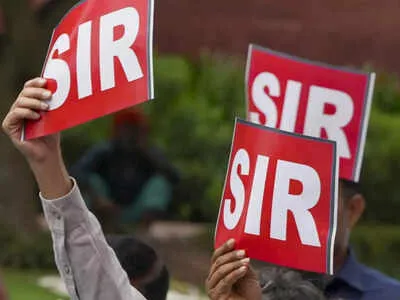Indian Laws: India, the world’s largest democracy, has one of the most complex and comprehensive legal systems in the world. With its deep history, developed laws, and constitutionally supported democracy, the Indian legal framework governs the rights, duties, and conduct of its citizens and institutions. Whether you are a citizen, traveler, or business professional, understanding the basics of Indian law is crucial for navigating life and work in the country.
Indian Laws Foundation: Constitution of India
At the heart of the Indian legal system is the Constitution of India, which was adopted on 26 January 1950. It is the supreme law of the land and sets out the structure, powers, and duties of the government, as well as the fundamental rights and duties of citizens.
Key Features:
- Federal in structure but unitary in spirit
- Three-tier system: central government, state governments, and local bodies
- Separation of powers between the executive, legislature, and judiciary
- Guarantees fundamental rights such as equality, freedom of speech, and protection from discrimination
Main branches of Indian law
Indian law encompasses a wide range of legal areas. Some of the main areas are:
A. Civil Law
Resolution of disputes between individuals or organizations. General branches:
- Contract Law (Indian Contract Act, 1872)
- Property Law (Transfer of Property Act, 1882)
- Family Law (Hindu Marriage Act, Muslim Personal Laws, etc.)
- Tort Law
B. Criminal Law
Relates to crimes against the state or society.
- Indian Penal Code (IPC), 1860: Defines various crimes and punishments
- Code of Criminal Procedure (CrPC), 1973: Sets out the procedure for investigation and trial
- Evidence Act, 1872: Rules relating to admissibility of evidence
C. Constitutional Law
Allows citizens to challenge actions of the state that violate their constitutional rights.
D. Administrative Law
Regulates the functioning of government agencies and ensures the rule of law.
Judicial system in India
India follows a common law system inherited from British colonial rule. The judicial system is independent and impartial, consisting of:
- Supreme Court of India (New Delhi) – the highest court and constitutional guardian
- High Courts in each state handle appeals and major state-level matters
- District and Sessions Courts – handle civil and criminal cases at the local level
India also has tribunals and quasi-judicial bodies, such as:
- National Green Tribunal (NGT)
- Income Tax Appellate Tribunal (ITAT)
- Consumer Dispute Resolution Forum
Lawmaking in India
At the central level, laws are made by a bicameral legislature:
- Lok Sabha (House of the People)
- Rajya Sabha (Council of States)
At the state level, the legislatures pass state-specific laws. Once a bill is passed by both houses and gets the assent of the President, it becomes a law.
Rights and Duties of Citizens
Indian citizens enjoy a wide range of rights under the Constitution:
- Right to equality (Articles 14-18)
- Right to liberty (Articles 19-22)
- Right against exploitation (Articles 23-24)
- Right to religious freedom (Articles 25-28)
- Cultural and educational rights
- Right to constitutional remedies (Article 32)
Equally, citizens are bound by fundamental duties such as respecting the Constitution, promoting harmony, and protecting the environment.
Legal Reforms and Challenges
Over time, India has undertaken numerous legal reforms to keep pace with global standards:
- Decriminalization of homosexuality (Section 377 repealed in 2018)
- Implementation of GST (2017) Simplified Tax Act
- Digital and cyber laws are evolving with the use of technology
- Women’s rights have been strengthened through the enactment of laws such as the Domestic Violence Act and the Maternity Benefit Act
However, challenges such as judicial delays, backlog of cases, lack of legal awareness, and access to justice remain.
Access to Justice and Legal Aid
The Indian Constitution ensures access to justice for all. Under Article 39A, the state must provide free legal aid to ensure justice for the underprivileged. Institutions such as:
- Legal Services Authority
- Lok Adalat (Public Courts)
- Online Dispute Resolution Platforms
- Help improve and expedite access to legal processes.
The Indian legal system is a complex blend of tradition and modernity, rights and responsibilities, law and justice. Whether you are a student, entrepreneur, or global citizen, gaining a basic understanding of Indian law enables you to make informed decisions, protect your rights, and fulfill your duties. As the country develops, so does its legal framework, keeping pace with social progress, global changes, and the aspirations of the people.
Explore the Indian legal framework including civil, criminal, and constitutional law. Learn your rights and duties with Mapupa – Search anything for your information, Understanding Legal Terminology, How to Get Driver’s License, Civil Rights Law, Pension Law, Product Liability Law, Domestic Violence.
![]()






3 thoughts on “Indian Laws: Understanding the Legal Framework in India”